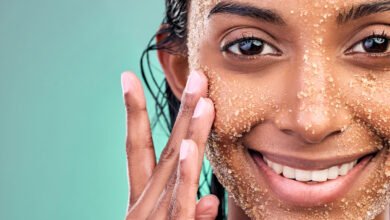Combat Mal de Debarquement Syndrome with Targeted Physiotherapy

Mal de Debarquement Syndrome (MdDS) is a challenging vestibular condition that often affects individuals after prolonged exposure to passive motion, such as cruising on a ship or flying. Those suffering from this disorder commonly experience a persistent sensation of rocking or bobbing when they are no longer in motion. To address this unsettling feeling, vestibular physiotherapy in Edmonton offers a promising avenue for relief and recovery. Specialized in treating various vestibular disorders, this form of physiotherapy utilizes targeted techniques designed to recalibrate the body’s sense of balance and motion.
By focusing on specific exercises and rehabilitation strategies, vestibular physiotherapy helps mitigate the disorienting symptoms of MdDS, enhancing stability and improving quality of life.
Habituation Exercises
Habituation exercises are a cornerstone of vestibular rehabilitation aimed at reducing the brain’s response to the sensations that trigger MdDS symptoms.
Technique Overview
Habituation exercises involve repetitive exposure to specific movements or visual stimuli known to provoke the patient’s MdDS symptoms. The primary goal is to reduce the brain’s sensitivity to these triggers gradually.
How to Perform
- Head Movements: Patients are instructed to perform specific head movements that typically induce their symptoms. These movements include tilting the head up and down, turning it from side to side, or performing diagonal movements.
- Visual Stimuli: Watching moving patterns or focusing on scrolling texts on a screen can also be part of the regimen. This exposure helps train the brain to cope with visual inputs that might otherwise trigger dizziness or a sense of rocking.
- Progressive Difficulty: The exercises start at a low intensity, with gradual increases in the range of motion or the speed of the visual stimuli, allowing the brain to adapt slowly over time.
Benefits
- Reduced Sensitivity: As the brain becomes accustomed to the triggers through repeated exposure, the sensitivity to movements or visual changes that previously caused discomfort decreases.
- Decrease in Symptom Severity: Over time, patients experience a reduction in the frequency and intensity of MdDS episodes, allowing them to engage more comfortably in daily activities.
- Improved Tolerance: Habituation exercises help patients tolerate a wider range of motion and visual stimuli, reducing the overall impact of MdDS on their quality of life.
Gaze Stabilization Exercises
Gaze stabilization exercises are essential for patients with MdDS to improve control over eye movements, which can significantly reduce symptoms triggered by visual stimuli.
Technique Overview
These exercises focus on training the eyes to maintain focus and stability despite movements of the head, which are common triggers for dizziness and imbalance in MdDS.
How to Perform
- Fixed Point Focusing: Patients focus on a stationary point directly ahead and then move their heads horizontally or vertically while maintaining their gaze on the point without letting their eyes wander.
- Dynamic Tracking: More advanced exercises may involve following a moving object with the eyes while keeping the head still or moving the head while trying to keep the eyes on a moving target.
Benefits
- Enhanced Visual Clarity: These exercises improve the ability of the eyes to track objects smoothly, which helps in reducing the blurring and dizziness associated with MdDS.
- Reduced Dizziness: As eye stability improves, patients report fewer episodes of dizziness and a greater ability to handle complex visual environments.
Balance Training
Balance training is critical for managing MdDS, as the syndrome often affects one’s ability to maintain proper orientation and stability.
Technique Overview
Balance training involves exercises that enhance proprioception and physical coordination, which are crucial for stabilizing the body’s position in space.
How to Perform
- Single-Leg Stands: This is performed by standing on one foot for extended periods, possibly on different surfaces or with eyes closed to increase difficulty.
- Line Walking: Walking heel-to-toe along a straight line, which challenges balance and coordination.
- Use of Balance Boards: Engaging in exercises on balance boards or stability cushions that force the body to adapt to unstable surfaces.
Benefits
- Improved Coordination: These exercises strengthen the vestibular system’s capacity to process sensory information and maintain balance.
- Reduced Disorientation: Regular balance training helps patients feel more grounded and stable, reducing the sensations of rocking or swaying associated with MdDS.
Relaxation Techniques for MdDS
Relaxation techniques help reduce the physiological and psychological stress associated with MdDS.
Technique Overview
These techniques involve various methods to calm the mind and body, thereby mitigating the stress that can aggravate MdDS symptoms.
How to Perform
- Guided Deep Breathing: Patients learn to focus on slow, deep breaths that help reduce the body’s stress response. This can be done during sessions or through guided audio recordings.
- Meditation: This includes training the mind to focus on a particular object, thought, or activity to achieve mental clarity and emotional calm.
- Progressive Muscle Relaxation (PMR): This technique entails tensing and then relaxing various muscles in the body. It helps identify areas of tension and encourages overall relaxation.
Benefits
- Stress Reduction: Regular practice of these techniques significantly lowers stress levels, which can decrease the frequency and intensity of MdDS symptoms.
- Improved Emotional Regulation: Over time, relaxation techniques help improve patients’ ability to regulate their emotions, contributing to better management of the disorder.
Regain Your Equilibrium with Specialized Care
At Vertex Physiotherapy, we offer vestibular physiotherapy, providing targeted treatment for individuals suffering from Mal de Debarquement Syndrome and other vestibular conditions. Our dedicated approach focuses on alleviating the persistent sensations of swaying and rocking associated with MdDS, using techniques that help retrain the brain’s perception of balance and motion.
If you are struggling with symptoms of MdDS, don’t hesitate to contact Vertex Physiotherapy. Contact us at +1(587)-689-2066 or visit www.vertexphysio.ca to schedule an assessment and take the first step toward overcoming the challenges of Mal de Debarquement Syndrome through Vestibular Physiotherapy in Edmonton.





